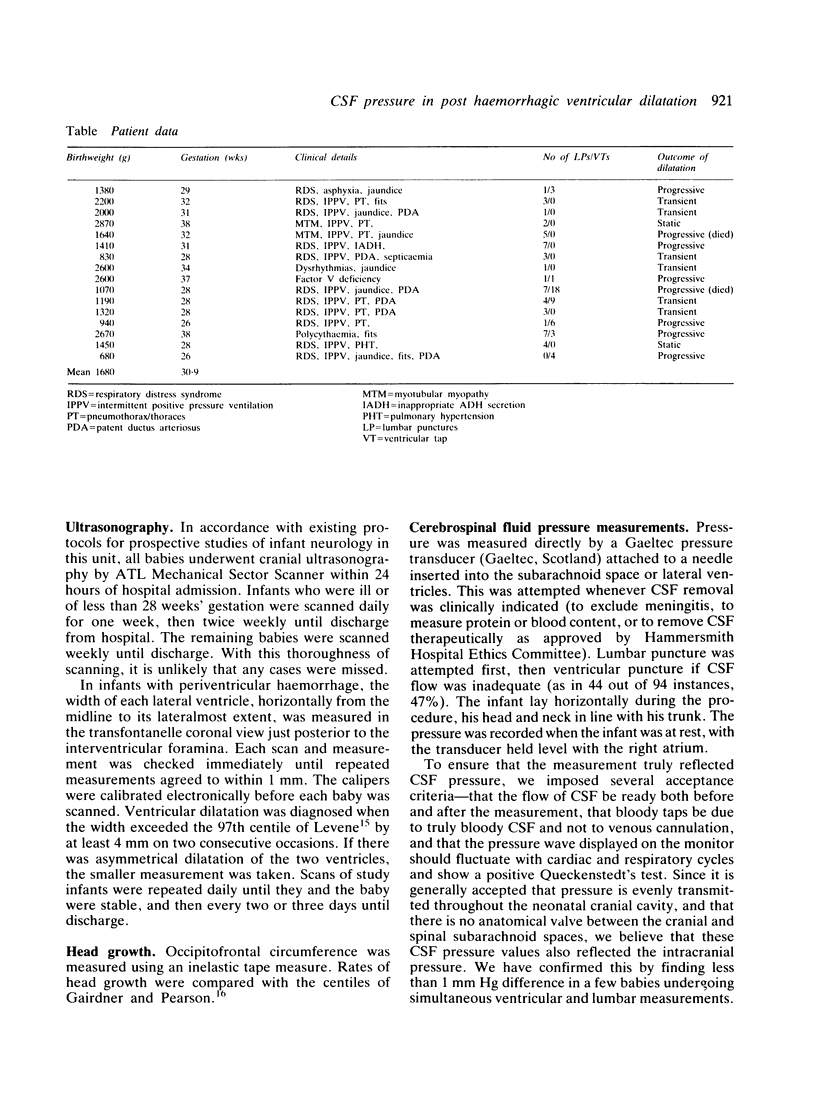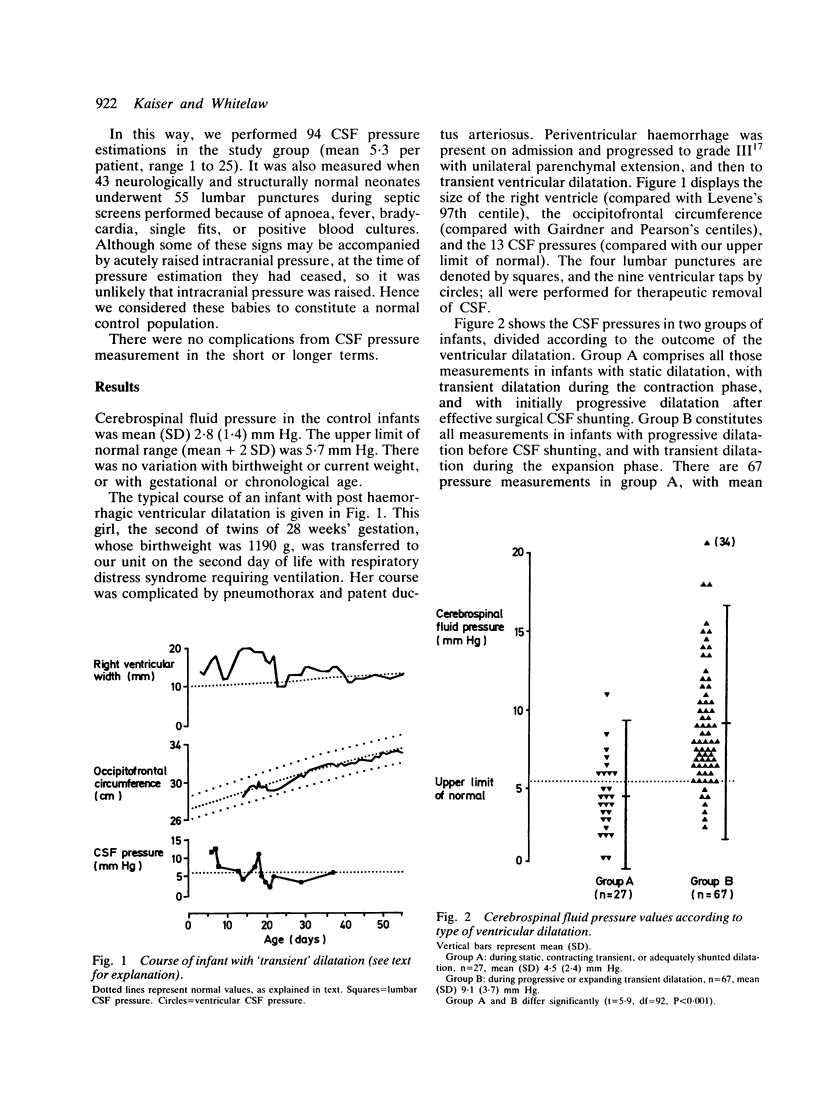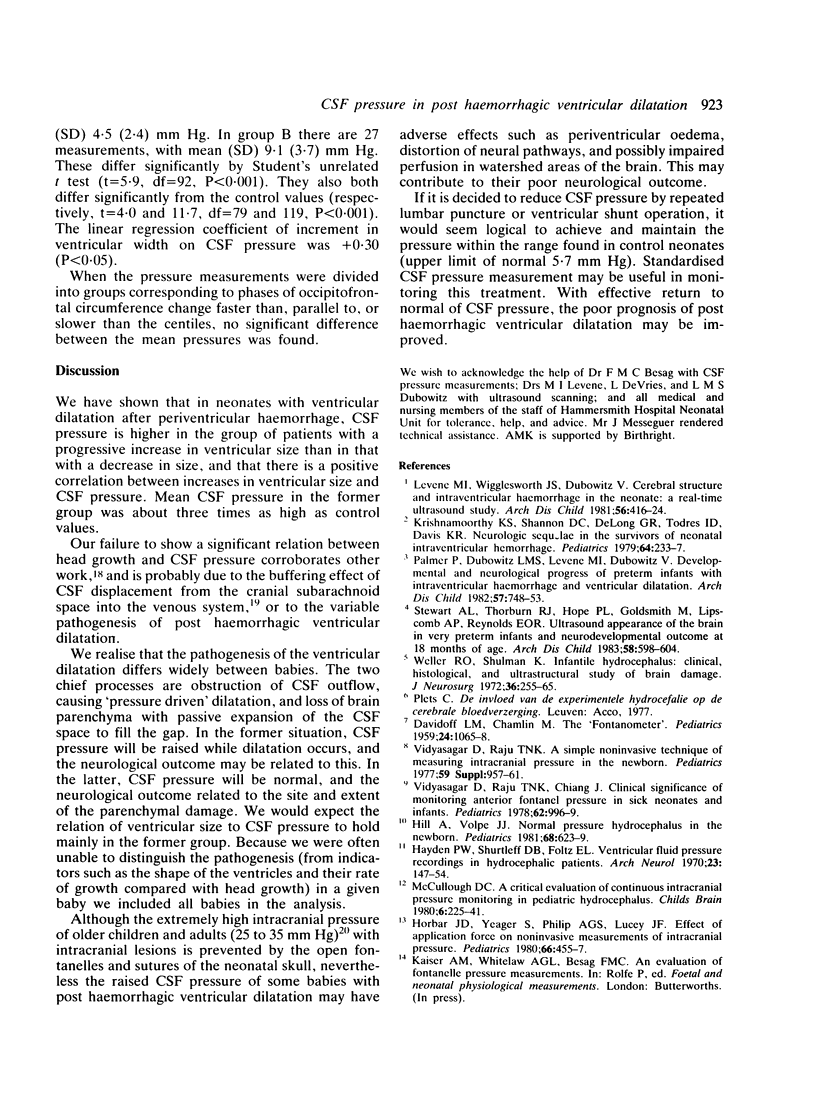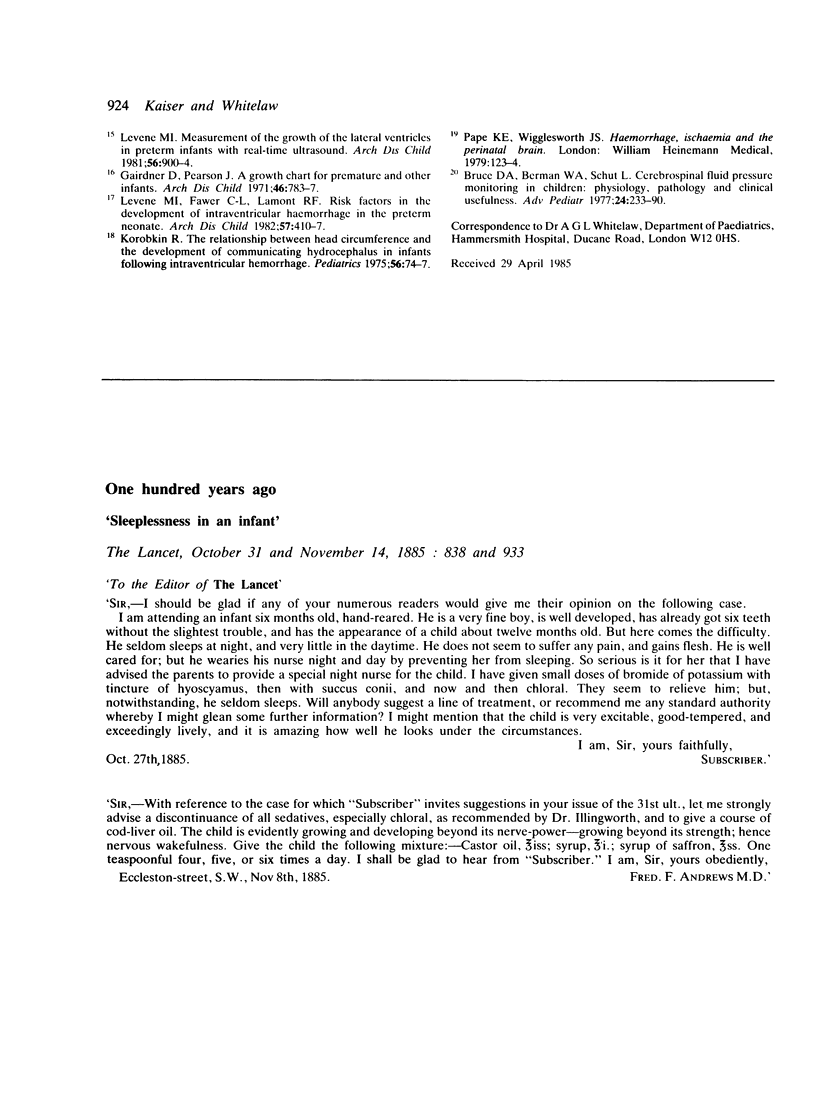Abstract
Post haemorrhagic ventricular dilatation occurs in a minority of newborn infants, but is associated with a high risk of cerebral palsy and developmental delay. Neither the relation of ventricular size to cerebrospinal fluid (CSF) pressure, nor the effect of CSF removal on prognosis, have been established. Normal CSF pressure measured at subarachnoid cannulation was mean (SD) 2.8 (1.4) mm Hg. Values were significantly higher in post haemorrhagic ventricular dilatation--9.1 (3.7) mm Hg when the ventricles were expanding, and 4.5 (2.4) mm Hg when they were static or contracting. No significant relation between head circumference and CSF pressure was found in this series. Raised CSF pressure is associated with progressive ventricular dilatation, and may contribute to the increased risk of neurological abnormality.
Full text
PDF




Selected References
These references are in PubMed. This may not be the complete list of references from this article.
- Bruce D. A., Berman W. A., Schut L. Cerebrospinal fluid pressure monitoring in children: physiology, pathology and clinical usefulness. Adv Pediatr. 1977;24:233–290. [PubMed] [Google Scholar]
- DAVIDOFF L. M., CHAMLIN M. The "fontanometer"; adaptation of the Schiotz tonometer for the determination of intracranial pressure in the neonatal and early periods of infancy. Pediatrics. 1959 Dec;24:1065–1068. [PubMed] [Google Scholar]
- Hayden P. W., Shurtleff D. B., Foltz E. L. Ventricular fluid pressure recordings in hydrocephalic patients. Arch Neurol. 1970 Aug;23(2):147–154. doi: 10.1001/archneur.1970.00480260053007. [DOI] [PubMed] [Google Scholar]
- Hill A., Volpe J. J. Normal pressure hydrocephalus in the newborn. Pediatrics. 1981 Nov;68(5):623–629. [PubMed] [Google Scholar]
- Horbar J. D., Yeager S., Philip A. G., Lucey J. F. Effect of application force on noninvasive measurements of intracranial pressure. Pediatrics. 1980 Sep;66(3):455–457. [PubMed] [Google Scholar]
- Korobkin R. The relationship between head circumference and the development of communicating hydrocephalus in infants following intraventricular hemmorrhage. Pediatrics. 1975 Jul;56(1):74–77. [PubMed] [Google Scholar]
- Krishnamoorthy K. S., Shannon D. C., DeLong G. R., Todres I. D., Davis K. R. Neurologic sequelae in the survivors of neonatal intraventricular hemorrhage. Pediatrics. 1979 Aug;64(2):233–237. [PubMed] [Google Scholar]
- Levene M. I., Fawer C. L., Lamont R. F. Risk factors in the development of intraventricular haemorrhage in the preterm neonate. Arch Dis Child. 1982 Jun;57(6):410–417. doi: 10.1136/adc.57.6.410. [DOI] [PMC free article] [PubMed] [Google Scholar]
- Levene M. I. Measurement of the growth of the lateral ventricles in preterm infants with real-time ultrasound. Arch Dis Child. 1981 Dec;56(12):900–904. doi: 10.1136/adc.56.12.900. [DOI] [PMC free article] [PubMed] [Google Scholar]
- Levene M. I., Wigglesworth J. S., Dubowitz V. Cerebral structure and intraventricular haemorrhage in the neonate: a real-time ultrasound study. Arch Dis Child. 1981 Jun;56(6):416–424. doi: 10.1136/adc.56.6.416. [DOI] [PMC free article] [PubMed] [Google Scholar]
- McCullough D. C. A critical evaluation of continuous intracranial pressure monitoring in pediatric hydrocephalus. Childs Brain. 1980;6(5):225–241. doi: 10.1159/000119909. [DOI] [PubMed] [Google Scholar]
- Palmer P., Dubowitz L. M., Levene M. I., Dubowitz V. Developmental and neurological progress of preterm infants with intraventricular haemorrhage and ventricular dilatation. Arch Dis Child. 1982 Oct;57(10):748–753. doi: 10.1136/adc.57.10.748. [DOI] [PMC free article] [PubMed] [Google Scholar]
- Stewart A. L., Thorburn R. J., Hope P. L., Goldsmith M., Lipscomb A. P., Reynolds E. O. Ultrasound appearance of the brain in very preterm infants and neurodevelopmental outcome at 18 months of age. Arch Dis Child. 1983 Aug;58(8):598–604. doi: 10.1136/adc.58.8.598. [DOI] [PMC free article] [PubMed] [Google Scholar]
- Vidyasagar D., Raju T. N. A simple noninvasive technique of measuring intracranial pressure in the newborn. Pediatrics. 1977 Jun;59 (Suppl)(6 Pt 2):957–961. [PubMed] [Google Scholar]
- Vidyasagar D., Raju T. N., Chiang J. Clinical significance of monitoring anterior fontanel pressure in sick neonates and infants. Pediatrics. 1978 Dec;62(6):996–999. [PubMed] [Google Scholar]
- Weller R. O., Shulman K. Infantile hydrocephalus: clinical, histological, and ultrastructural study of brain damage. J Neurosurg. 1972 Mar;36(3):255–265. doi: 10.3171/jns.1972.36.3.0255. [DOI] [PubMed] [Google Scholar]


